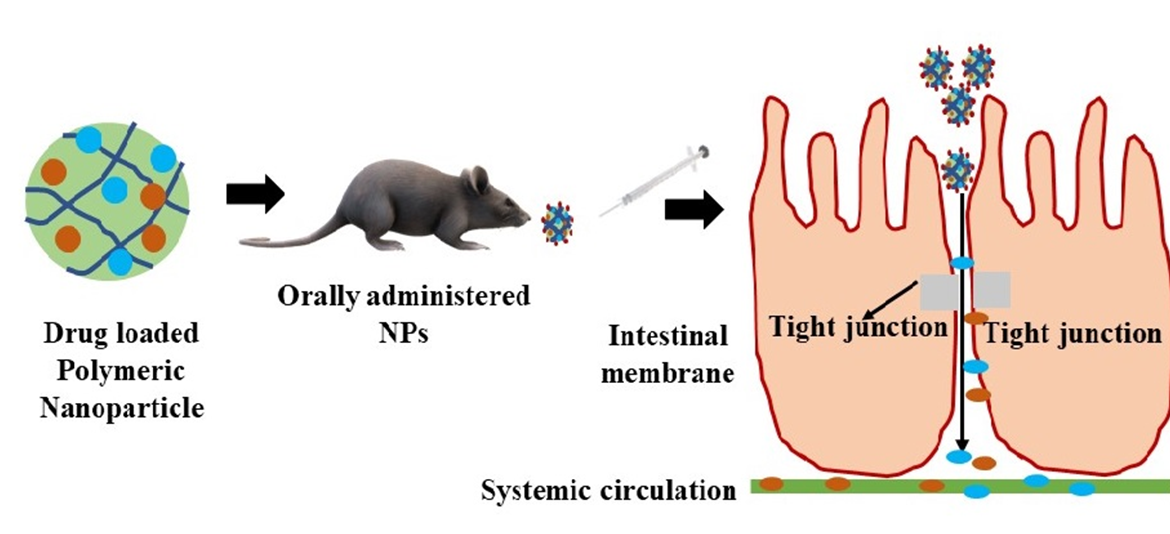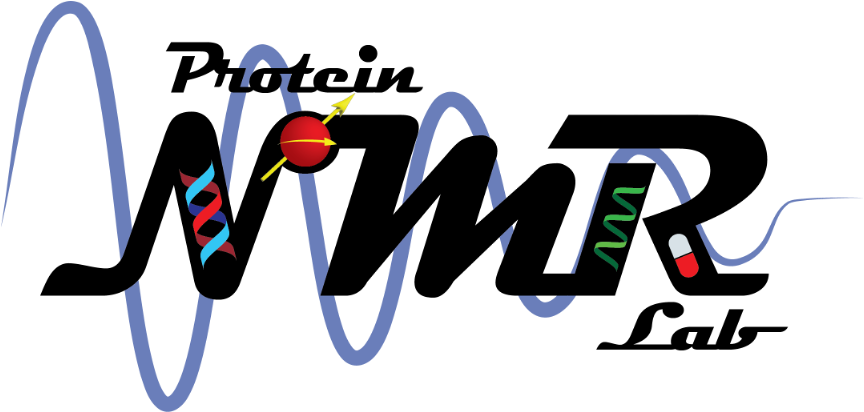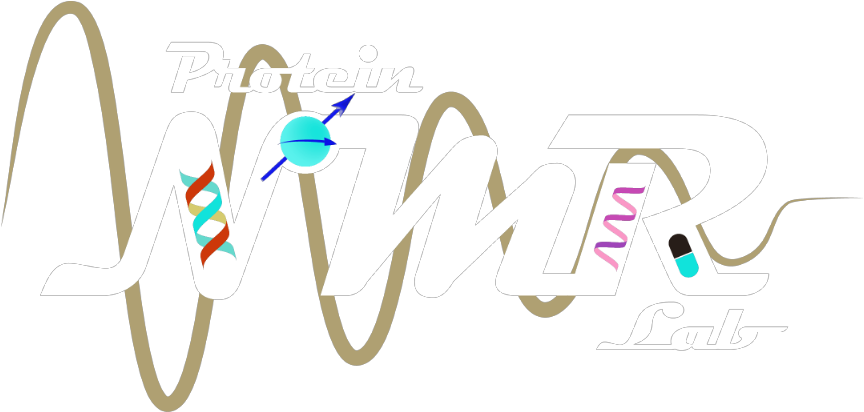Metabolism and related disorders
Diabetes is a complex metabolic disorder, there are several factors, genetics, environment, and lifestyle that lead to the pathogenesis of the disease. One of these factors is aggregation of human islet amylin polypeptide (hiAPP), a peptide co-secreted with insulin.
Deciphering a link between toxic conformations of amyloid and their interaction with lipid membranes: implication in initiation and progression of type-II diabetes
Toxic aggregates of amylin are thought to be the main culprit responsible for T2DM. Oligomeric and Fibril species of Amylin are prone to perturb the membrane of pancreatic β cells. Various membrane surfaces promote the conversion of amyloid-forming proteins into toxic aggregates, and these aggregates, in turn, disrupt the structural integrity of the cell membrane. Additionally, given the extensive hydrophobic nature of oligomeric species, they are prone to interact with the various lipid membranes in the cell. These observations help to explain the variable vulnerability of different cell-membrane types to the same kind of amyloids. We aim to characterize membrane-permeabilizing oligomers and their mechanism of membrane disruption by using various biophysical and microscopy approaches.
We are trying to find out the Interaction of toxic conformations of Amylin with various lipid membranes and its implications in the pathophysiology of T2DM
Team members: Ashraf, Akash
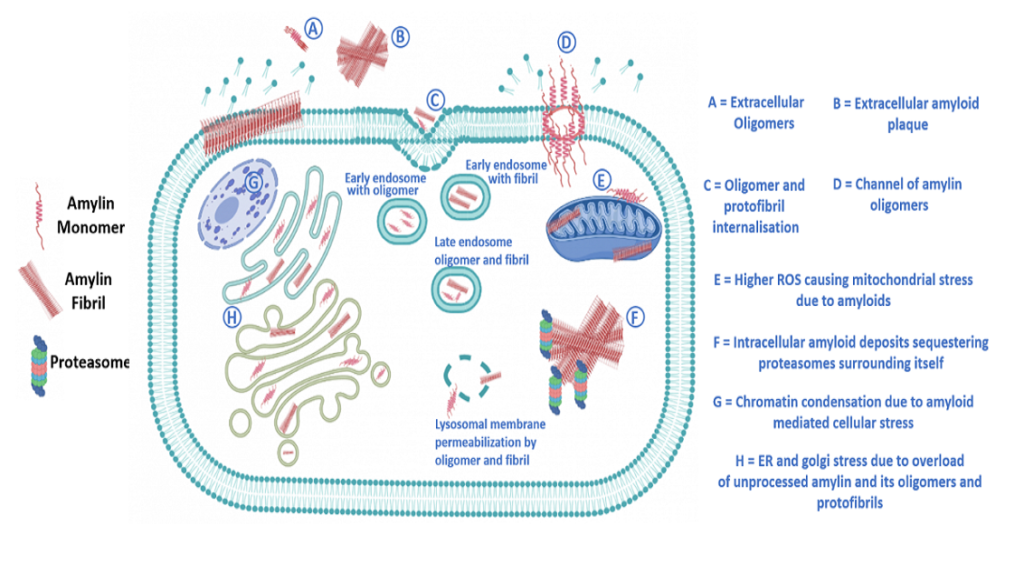
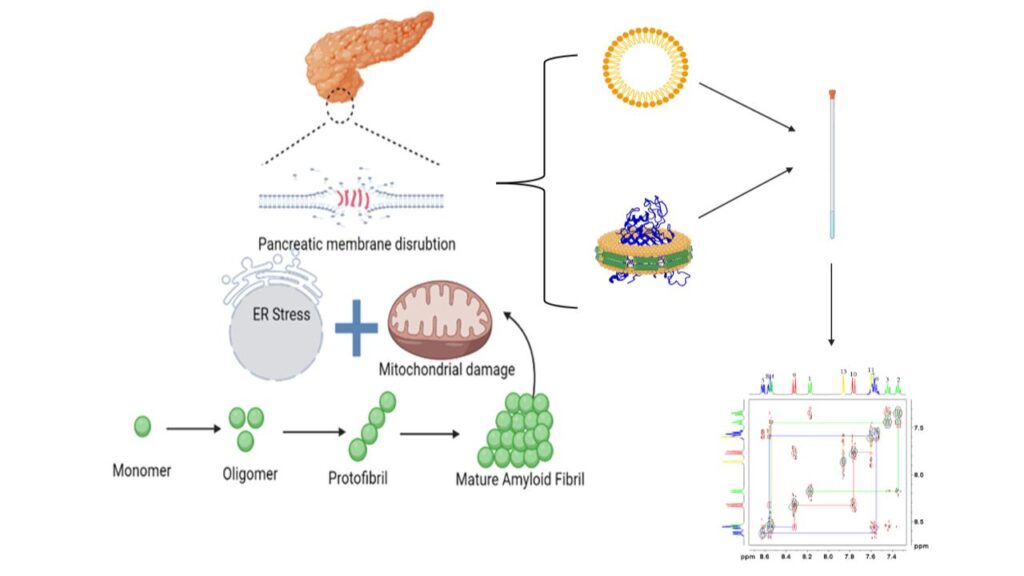
Deciphering metabolism and modeling the progression of type 2 diabetes mellitus using AI
To track the systemic changes in the metabolism we isolate metabolites and lipids from human healthy, prediabetic, and diabetic individuals. These small molecules are detected by NMR and LCMS techniques. Pathways are analyzed to decipher diabetic metabolism. The metabolic fingerprint is used to train machine learning algorithms to predict possible pathogenesis of the disease beyond glucose levels.
Team: Nikita Jain,Sneha Singh
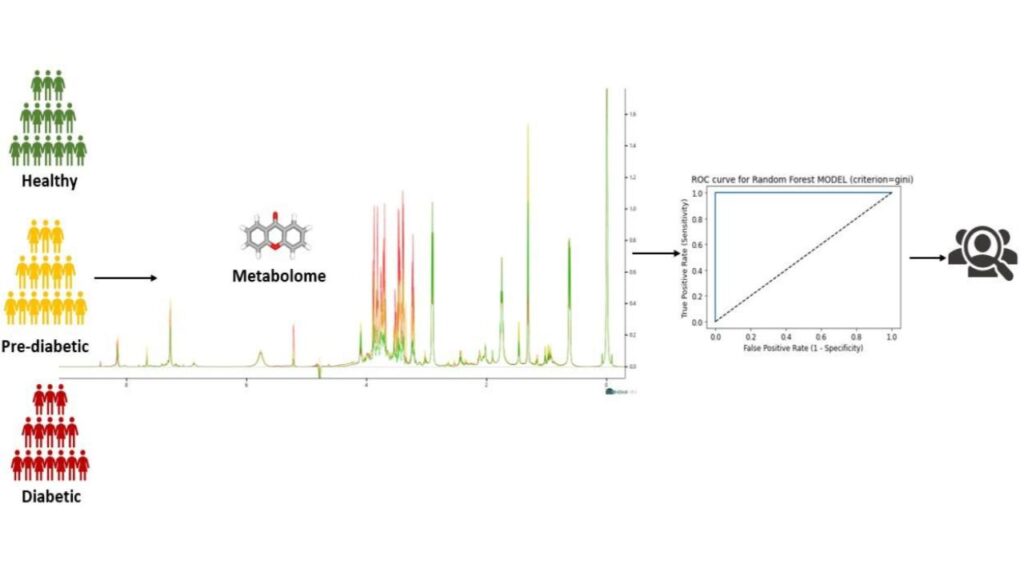
Cell-based NMR analysis to study the interaction between gluco-modulatory peptide and receptor-complex
Metabolic disorders like type 2 diabetes, are one of the leading causes of mortality worldwide. Insight into the interaction of gluco-modulatory peptides such as glucagon-like peptide 1 and amylin analogs with their target protein receptors is crucial for the better management of metabolic disorders. In the lab we are working to elucidate the aforementioned interaction, using the NMR technique, in the presence of other accessory proteins, essential for peptide selectivity towards their receptors.
Team members: Zofishan and Arpita
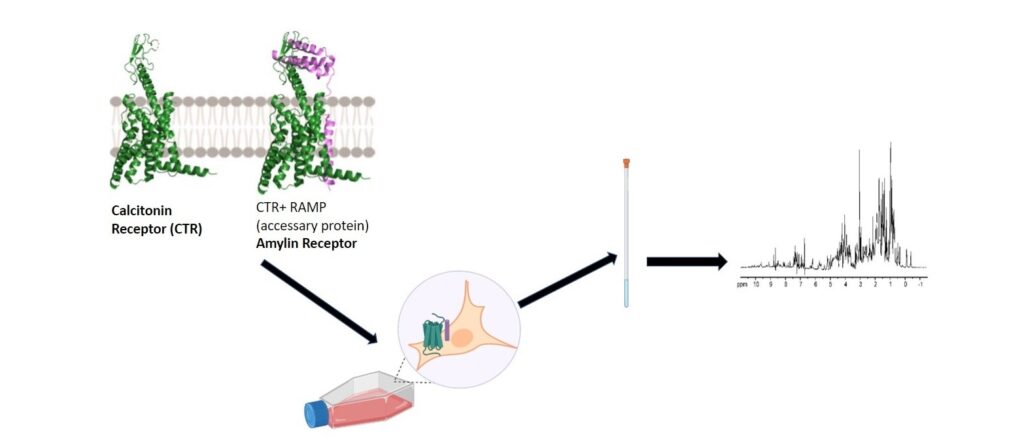
Understanding the effect of interacting partners on the property of α-synuclein and its familial mutants
Neurodegenerative diseases have been associated with misfolding and aggregation of various proteins such as Aβ (amyloid beta), α-synuclein, and tau. Parkinson’s disease is the second most prevalent neurodegenerative disease and is characterized by the presence of proteinaceous Lewy bodies and Lewy neurites, predominantly rich in higher aggregates of α-synuclein. α-Syn is an amyloidogenic protein as it undergoes a conformational transition from natively disordered monomeric structure to cross- β-sheet rich structure in amyloid-like fibrils with helical intermediates. To date, seven familial mutants have been discovered in different populations across the world. These familial mutants have different aggregation propensities as compared to the wild type in the presence and as well as in the absence of membrane. The underlying mechanism of differential aggregation of α-synuclein and its mutant is still unclear. Elucidation of structure and dynamics of the α-synuclein due to various extrinsic factors such as interacting protein partners and membrane: and intrinsic factors such as single point mutation and diffusion, by solution and solid-state NMR, would unveil the mystery behind the differential aggregation and would provide a better insight in the effect of a single mutation on the different onset of Parkinson’s disease.
Team members working on this project are: Rajlaxmi Panigrahi
Development of oral nanoparticles for the management of type 2 Diabetes
Type 2 Diabetes is one of the major and fastest-growing health problems in India and globally. The disease is now considered an important public health challenge due to the incidence of a 5% increment of diabetic people per year. However, the market for diabetes is vast; and the medications available are working only on slowing the progression of the disease. With the advancement in Pharmaceutical Biotechnology, various peptide drugs with promising results are available in the market However, their mode of administration is intravenous only, which is unfortunately not useful in more severely affected patients who will accept injections. To overcome the fear of injection and related complications of T2DM, our idea is to co-deliver the natural flavonoid with the peptide drug. In this project, we will investigate whether the combination treatment of natural flavonoid with peptide drug is more effective in preventing T2DM by improving insulin resistance and functional preservation of β cell mass in T2DM-induced mice. The results from this research could be very useful and can open an opportunity for using natural products in combination with peptide drugs for the management of T2DM.
Team: Dr. Mansi Upadhyay
